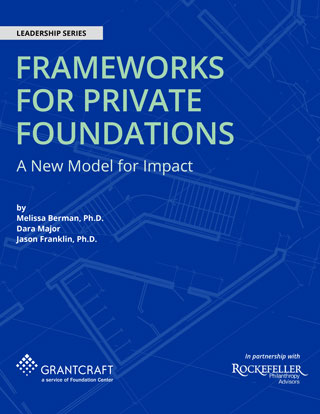The California Endowment Roles and Goals
As the California Endowment’s strategic approach evolved since its founding in the 1990s, it has changed the way it approaches goal setting on capacity building with grantees. “When I first came to the foundation almost 13 years ago, in many respects we operated as a large community foundation,” says Gregory Hall, director of program quality and effectiveness at the California Endowment. “We mainly responded to needs identified by grantees.” Over time, the foundation’s leadership started asking big questions about mission-related impact. “As a health-focused foundation, Dr. Ross and the board began to say, ‘At the end of the day what are we accomplishing if there’s more and more people without health insurance? If the health system within California is no more culturally competent than it was five years ago? What have we actually done? As a big foundation with more resources than any other foundation in the state don’t we have a higher responsibility to place some big bets?’” As a result of taking on this line of internal inquiry, every year the foundation became more focused strategically on building capacity for advocacy and systems change. As that happened, the foundation started working differently with grantees, clarifying with grantees its strategic goals as a foundation. “This has sometimes meant grantees say, ‘That’s not what we want to do,’” says Hall. “I remember sitting down with one nonprofit executive director who said to me, ‘I hear what you’re saying. I hear where you’re going but we are a direct services organization. I wish the foundation luck but we’re not going to be a fit anymore.’” In these situations, the foundation has tried to work with grantees as they transition from its funding, but it stays true to its now more clearly defined strategic direction, which sets the frame for all capacity building-related conversations.



